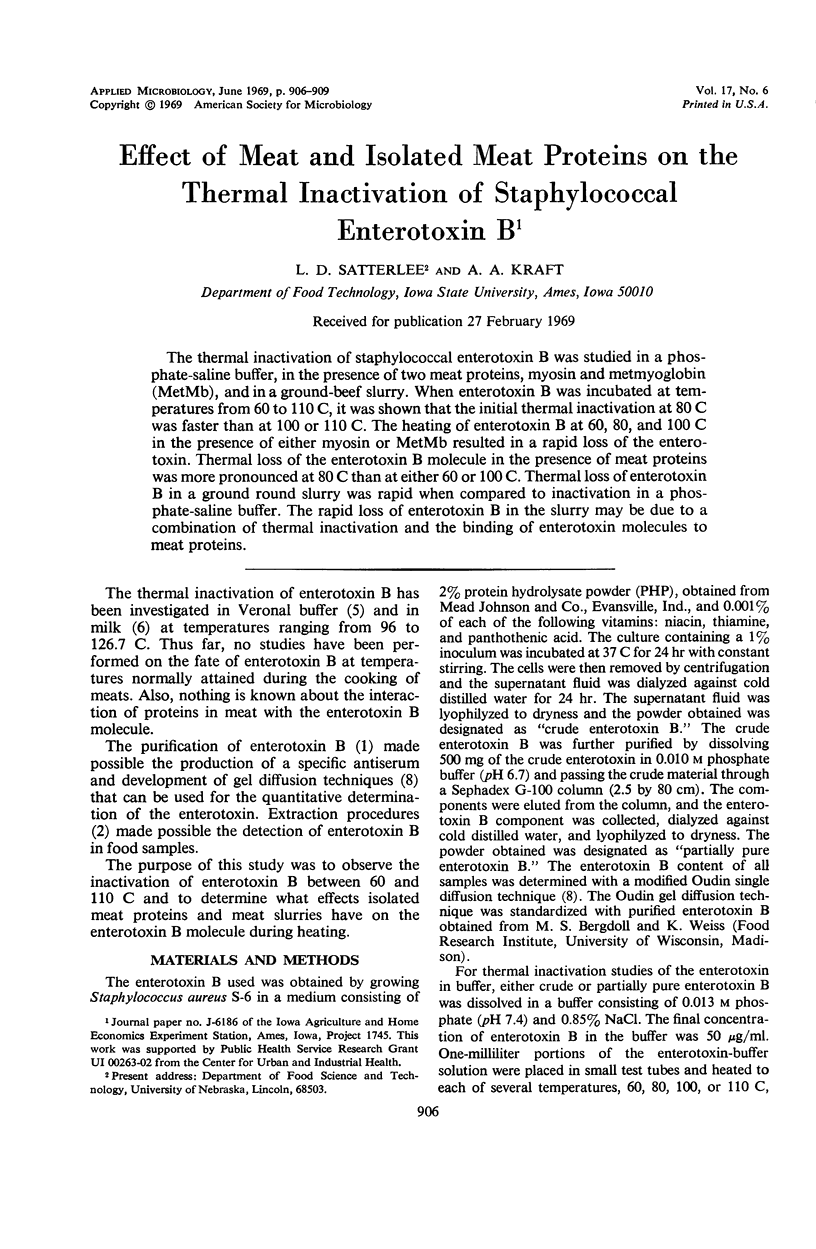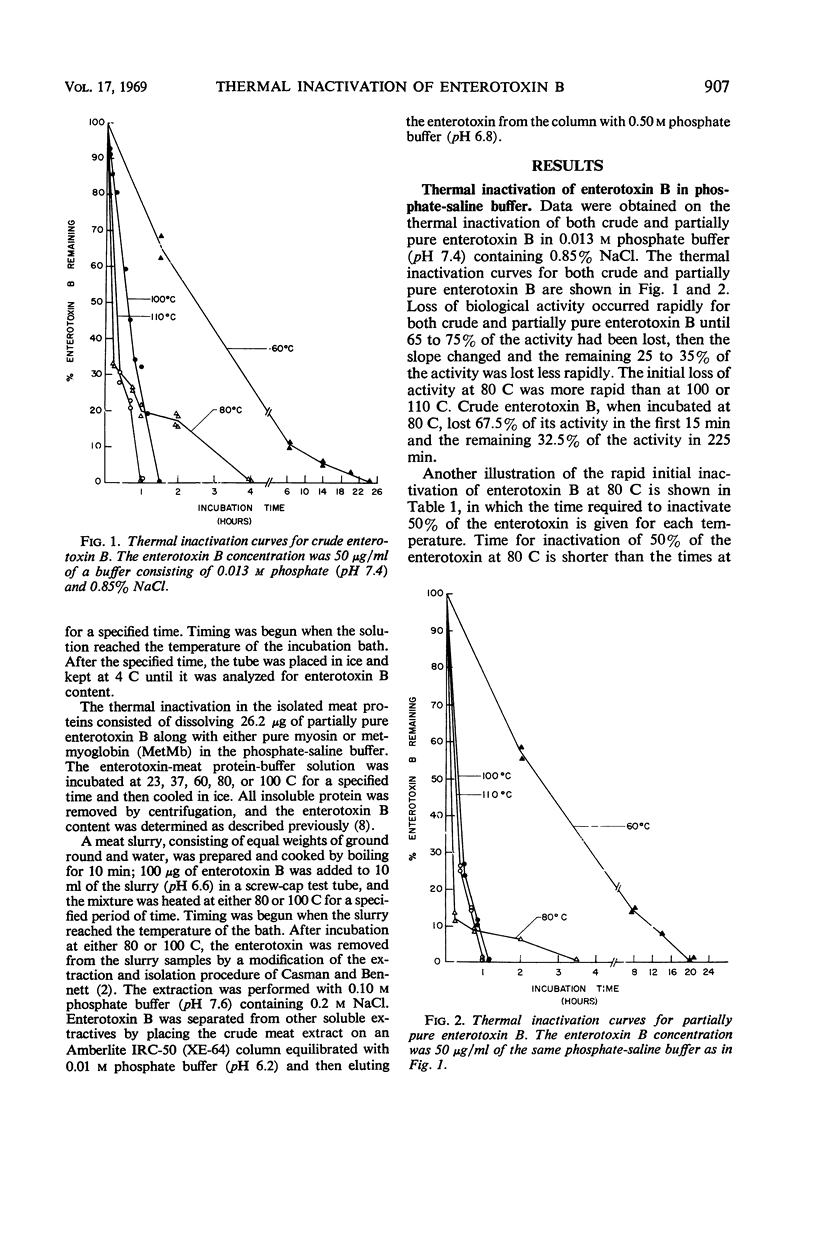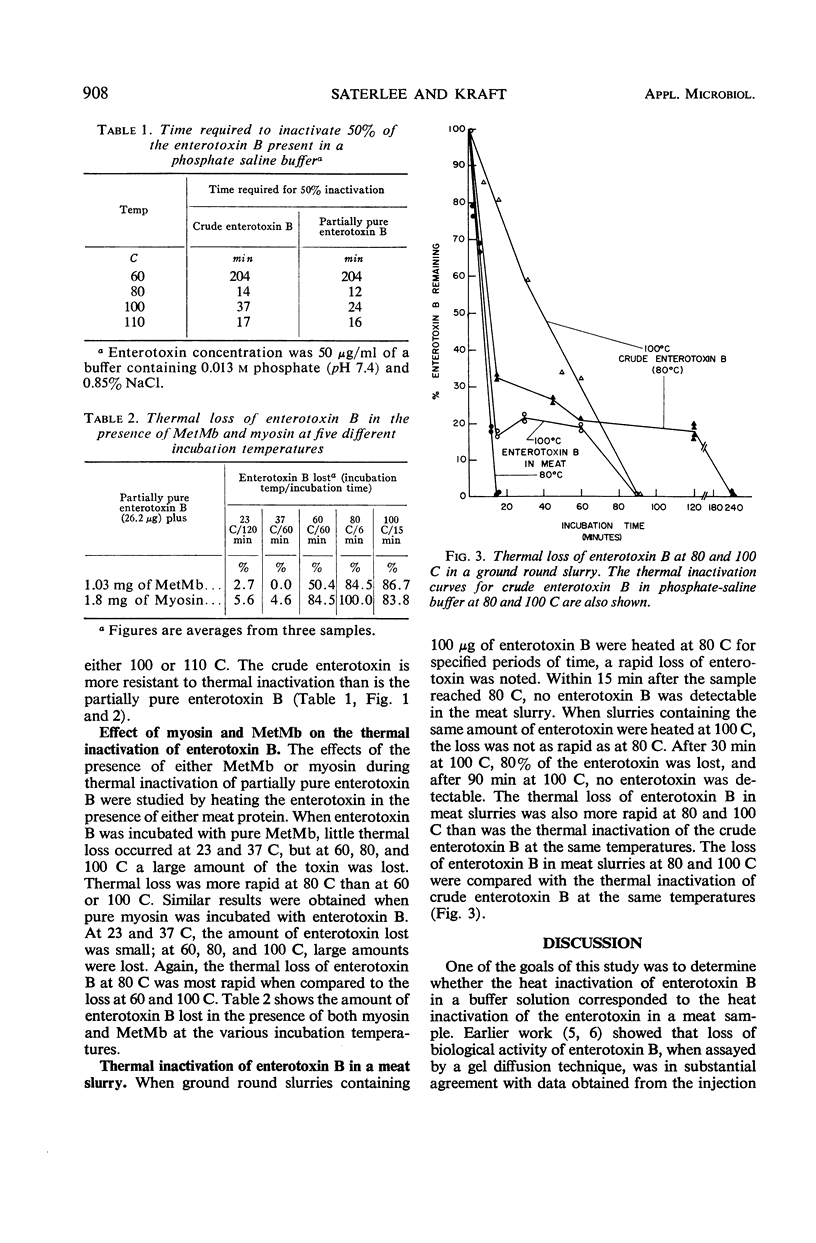Abstract
The thermal inactivation of staphylococcal enterotoxin B was studied in a phosphate-saline buffer, in the presence of two meat proteins, myosin and metmyoglobin (MetMb), and in a ground-beef slurry. When enterotoxin B was incubated at temperatures from 60 to 110 C, it was shown that the initial thermal inactivation at 80 C was faster than at 100 or 110C. The heating of enterotoxin B at 60, 80, and 100 C in the presence of either myosin or MetMb resulted in a rapid loss of the enterotoxin. Thermal loss of the enterotoxin B molecule in the presence of meat proteins was more pronounced at 80 C than at either 60 or 100 C. Thermal loss of enterotoxin B molecule in the presence of meat proteins was more pronounced at 80 C than at either 60 or 100 C. Thermal loss of enterotoxin B in a ground round slurry was rapid when compared to inactivation in a phosphate-saline buffer. The rapid loss of enterotoxin B in the slurry may be due to a combination of thermal inactivation and the binding of enterotoxin molecules to meat proteins.
Full text
PDF



Selected References
These references are in PubMed. This may not be the complete list of references from this article.
- BERGDOLL M. S., SUGIYAMA H., DACK G. M. Staphylococcal enterotoxin. I. Purification. Arch Biochem Biophys. 1959 Nov;85:62–69. doi: 10.1016/0003-9861(59)90447-3. [DOI] [PubMed] [Google Scholar]
- CASMAN E. P., BENNETT R. W. DETECTION OF STAPHYLOCOCCAL ENTEROTOXIN IN FOOD. Appl Microbiol. 1965 Mar;13:181–189. doi: 10.1128/am.13.2.181-189.1965. [DOI] [PMC free article] [PubMed] [Google Scholar]
- Hilker J. S., Heilman W. R., Tan P. L., Denny C. B., Bohrer C. W. Heat inactivation of enterotoxin A from Staphylococcus aureus in veronal buffer. Appl Microbiol. 1968 Feb;16(2):308–310. doi: 10.1128/am.16.2.308-310.1968. [DOI] [PMC free article] [PubMed] [Google Scholar]
- Read R. B., Jr, Bradshaw J. G. Staphylococcal enterotoxin B thermal inactivation in milk. J Dairy Sci. 1966 Feb;49(2):202–203. doi: 10.3168/jds.S0022-0302(66)87827-X. [DOI] [PubMed] [Google Scholar]
- Read R. B., Jr, Bradshaw J. G. Thermal inactivation of staphylococcal enterotoxin B in veronal buffer. Appl Microbiol. 1966 Jan;14(1):130–132. doi: 10.1128/am.14.1.130-132.1966. [DOI] [PMC free article] [PubMed] [Google Scholar]
- SMITH L. D., GARDNER M. V. The anomalous heat inactivation of Clostridium perfringens lecithinase. Arch Biochem. 1950 Jan;25(1):54–60. [PubMed] [Google Scholar]
- Weirether F. J., Lewis E. E., Rosenwald A. J., Lincoln R. E. Rapid quantitative serological assay of staphylococcal enterotoxin B. Appl Microbiol. 1966 Mar;14(2):284–291. doi: 10.1128/am.14.2.284-291.1966. [DOI] [PMC free article] [PubMed] [Google Scholar]


